Overview of Laboratory Oven
Laboratory oven is an instrument that is used for high-forced volume thermal convection applications. Laboratory ovens can be used for annealing, die-bond curing, drying, Polyimide baking, sterilizing, and other industrial laboratory functions. Normal sizes are from one cubic foot to 0.9 cubic meters (32 cu ft.). These ovens generally provide uniform temperatures throughout the chamber. Normal laboratory ovens maintain temperatures ranging from 5° C above ambient to about 300° C and are ubiquitous in chemistry, biology, pharmaceutical, forensics, and environmental labs. Units operating at temperatures above 300° C are normally dedicated to specialized applications in physics, engineering, electronics, and materials processing.
List of Useful Tips to Buy Laboratory Ovens
Just check out these below written useful tips to buy the right laboratory ovens properly.
1.Type
What type of laboratory oven do I require? Most common Ovens are:
2.Standard ovens(gravity or fan-assisted convection)
Set temperature from ambient or above to maximum 200oC to 300oC (depending on the model)
3.High-temperature ovens
Temperatures available up to 600° C with various controllers available including programmable for temperature profiling, etc.
Hybridization Ovens(or Hybridization Incubators)
Laboratory Ovens with integral rotisseries to hold different sizes of hybridization bottles (cylindrical with screw caps) and rotate them at a set speed to enable hybridization of the contents (molecular biology).
#1)Oven sterilizers (or incubator sterilizers)
It can be used as a standard incubator or at a higher temperature to sterilize instruments, etc.
#2)Incubator or oven?
Incubators generally have maximum temperatures of up to 80° C or 100° C and laboratory ovens usually have a maximum temperature of 200° C – 300° C with high-temperature versions up to 600° C. Also check the lowest temperature as per requirement because some ovens are from Just above ambient temperature to their maximum temp. and some from, say 100° C, to their maximum.
#3)Internal volume
When comparing laboratory ovens it is better to compare the internal dimensions (W x D x H) rather than the stated liter capacity because different manufacturers describe the internal liter capacity differently and it can be misleading. Some manufacturer states the total internal volume while others state the theoretical ‘available‘ volume.
Also, consider the external dimensions (Lab. space available and enough access) and whether bench or floor standing.
#4)Aluminum clad or stainless steel interior
#5)Gravity or fan-forced convection
This choice normally depends on whether temperature uniformity in the oven is important or not. Especially in the large lab Ovens Fan-forced circulation gives better temperature uniformity in the cabinet.
#6)Digital or analog control/display
Analog control is normally by a numbered dial (e.g. numbered 1 to 10 or in approx. ° C) and needs a thermometer or dial thermometer to display the actual temperature. The control is usually hydrostatic and is generally prone to overshoot before stabilizing on the set temperature.
Digital control means the temperature is set and displayed via a digital LCD controller, usually described as digital microprocessor or digital PID controller. By far the most sophisticated controller is the PID (proportional integral derivative) controller. PID controllers are highly desirable for applications that demand precise temperature control and uniformity.
PIDs measure the discrepancy between the actual temperature and the setpoint, then calculate how long to keep the heating element on to reach the setpoint temperature without overshooting it. While PID controllers take a bit longer to bring the oven to the desired set point, they do not constantly overshoot the target temperature as less sophisticated controllers do.
#7)Shelves
Check the number of shelves provided and number of possible shelf positions (extra shelves are usually available if required)
#8)Vent
Enables any fumes, etc. to be vented outside the chamber and room
#9)Timer or programmable (including ramping / dwells for temperature profiling)
#10)Safety features
In accordance with the Laboratory ovens, a minimum of an independent, manually adjustable high-temperature cut-out dial should be there (set temperature a several ° C above the oven set-point so that if a problem occurs and the cabinet overheats it will cut out at the cut-out temperature rather than hit its maximum). Some ovens have a high temperature (or low temperature) alarms or connection possible to an external alarm system
#11)RS232 interface, chart recorders, validation, etc.
It is used for recording temperature recording, GLP, etc.
Applications of a Laboratory Oven
The essential functions of a laboratory oven are:
- Drying: removing the moisture from the specimen and chamber as efficiently as possible.
- Baking: heating a substrate without dehumidifying it.
- Curing: the sample is physically or chemically altered by a slow baking and drying process.
Lab ovens are used in chemistry, biology, pharmaceutical, forensics, and environmental laboratories. Common applications for lab ovens include:-
- Sample Testing: The Oven is used in conjunction with other equipment to determine material tensile strength, fatigue, deformation, and resiliency.
- Annealing: Metal component undergo surface treatments to improve ductility and malleability.
- Solvent/ Water removal: moisture or solvent are removed from industrial compounds or chemicals, such as desiccants and catalyst.
- Polymer curing: A Polymer resin is dehydrated to form a hard-set plastic.
- Sterilizing: All microbiological life is exterminated from the oven’s heat.
- Evaporation: Samples, such as food, are dried to measure its total water content.
- Glassware Drying
Why to Buy Laboratory Oven Online at Industrybuying.com?
Industrybuying.com is a leading B2B e-commerce website in the country. The company hosts some of the renowned brands online on its website which include Tanco, NSLI, Bio Technics, JSI, Royal Scientific, Scientech and Contemp. You can avail of exclusive discounts on your purchase of Laboratory ovens at Industrybuying.com. Over the years, Industrybuying.com has created a niche for its services.
Be it a seamless online shopping experience, exclusive discounts on top brands or bulk discounts orders the company ensures that the customers have the best online shopping experience. To make the payment you can choose any of the convenient payment modes among online channels via Net Banking or use Credit/Debit cards or you can also opt for Cash On Delivery or any of the available EMI plans.
The company ships the purchase order above Rs, 1,000 free of cost right at your doorsteps. For any requirement of branded Laboratory ovens and for the assistance you can reach out to us at our Toll-free number 1800-300-0955 for professional help.

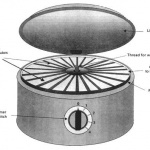
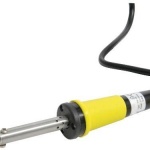
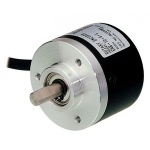
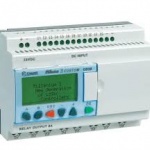

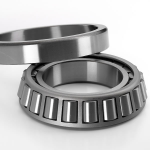
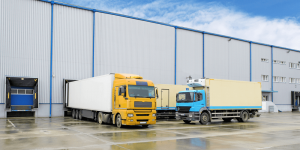
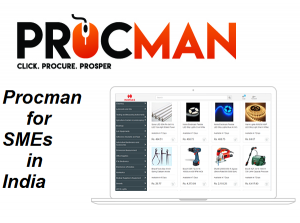
Average Rating